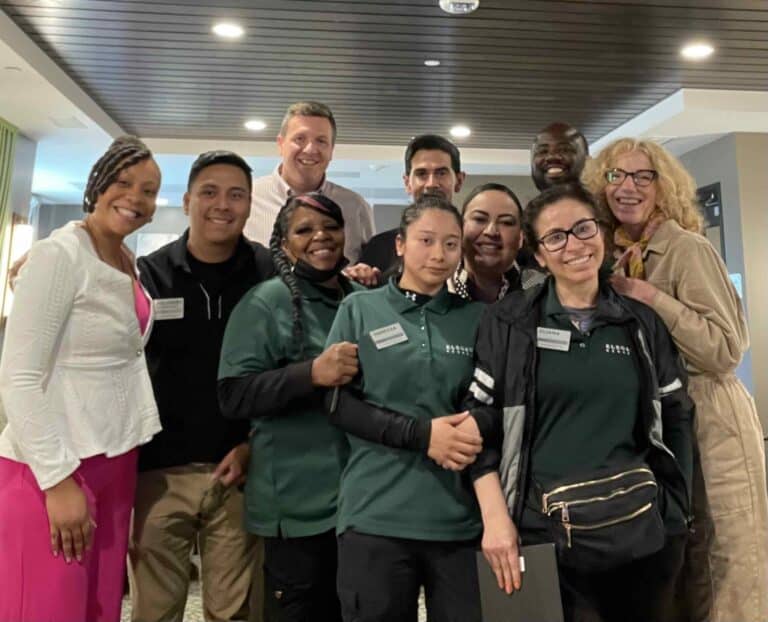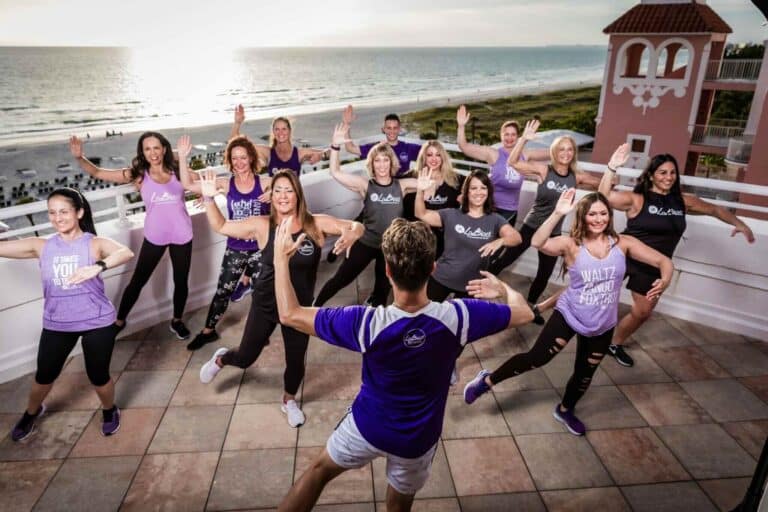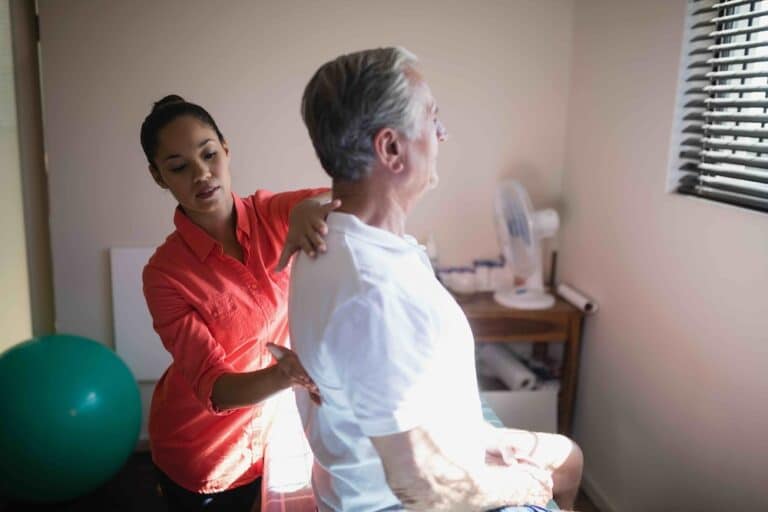We previously defined resiliency in the workforce and talked about how to measure if it exists or not. But what about tactics to actually build a resilient company?
In this post we hear from the heads of HR at Bloomberg, Dollar General, and a senior HR leader at Google on six areas to focus on when building resilience (the full video of their discussion is available here). What follows is the transcript of their discussion, edited for clarity.
How do you create a resilient company?
There are six major areas to focus on building a resilient company filled with resilient employee that were discussed.
They are:
- Communicate & Think big – Have a big mission people can really around and talk about the why of what you do
- Measure and track resilience – Be explicit about defining and measuring resiliency
- Be thankful – Create and execute a gratitude practice to foster stronger relationships among your employees
- Scenario plan – Create business continuity plans and take scenario planning seriously and then practice
- Empower people – Empower people with the know-how to help themselves and others around them
- Be human – Understand what it means for Humans to be the “shock absorbers” of the system
Communication as the Root of Resilience
Bob Ravener, Former CHRO of Dollar General
The root of everything we try to do in business that will ultimately dictate greater success over others is communication. Communication and involvement are where it starts.
The message comes from the top first. [And what matters there] is the tenor of that message, the ability to get other people deep in the organization involved in working on solutions so that there is a sense and a feeling that we’re all in this together and that we all have to solve it together [is what creates resilience].
“The ability to get other people deep in the organization involved in working on solutions so that there is a sense and a feeling that we’re all in this together and that we all have to solve it together.”
The organizations that have bystanders and victims who feel like, well, “what’s the company going to do for me?” will struggle. [One way to measure whether you have active employees or victims working for you is through regular engagement surveys]. And I would say the closer you can get to real time and respond to real time scenarios, the more likely it is that you’re going to be able to continue to adapt in accordance and the need of the business going forward.
Dipti Sirisinahal, People Strategist and Leadership Coach at Google
And the other thing that I also find is in every communication, ensuring that people talk about the why first. Again, [it sounds like] a simple approach, but [it’s also] something everybody can do.
So:
- Talk about the why first
- And then the how
- And then the what
[This can be counter-intuitive for some companies]. A lot of organizations that have a bias toward action, they tend to start with the what, they say ‘hey here’s what going to do. And here’s how we’re going to do it. I hope everyone’s on board.’ And guess what? Probably no one is.
Lots of organizations that have a bias toward action, they tend to start with the what, they say ‘hey here’s what going to do. And here’s how we’re going to do it. I hope everyone’s on board.’ And guess what? Probably no one is.
Always at every level of the organization whether [you are] a manager or a leader start with the why. And those are like two very simple things that are zero cost that you can start doing today.
Are traditional talent retention metrics a way to drive higher resilience?
If resilience is driven by people, and people respond to strong, positive communication, another way to define resilience / area to focus on, is through retention.
Bob Ravener: I still think retention and attracting great talent is a great way to understand and measure the resiliency of a company. Although I would also say that at this point in time [during COVID-19] that if you are just starting to measure those kinds of things, it’s probably too late in the game. Now it can help in the future, but at the same time, you’ve really got to double your efforts to try to work on those things in the short term as well.
Instill Gratitude to Solidify Culture
Dipti Sirisinahal
From a culture perspective, this might actually seem like a very small thing, but it went a long way in a couple of companies that have introduced it which is: [build a shared gratitude journal] at the leadership level. Basically this is a shared Google doc or a box notes, whatever shared documentation platform you guys are using, and you simply have every leader come in and write down what they’re grateful for. And gratitude actually helps build a lot of resiliency at the individual level. And when we’re doing it at the leadership level, it starts to flow down. So I think that is one thing that is a small thing – It’s easy to do, it doesn’t cost anything – that we’ve done that’s gone a long way that I personally I feel like everyone should do.
Note: Burnalong does this via video at meetings and company all-hands, and we agree it works!
Scenario Planning and Business Continuity Plans as it Relates to Resilience
Ken Cooper, Head of HR at Bloomberg
There are a few very practical things you need to be doing as an organization…to make sure you have the right operational structural procedures in place. You can’t be ready for every event, but you can rehearse quite a bit for a number of things.
So take our [Bloomberg’s] business continuity plans for alternative sites. [When we went through the planning process we never decided to pursue alternative sites] for example, because when we thought about it, we said, wait a second, every time there’s a hurricane or a snowstorm, we can’t [open these alternative sites]. So not only can we not use our main site, we can’t use alternative sites. So having a backup site didn’t make sense.
[That’s why] our business continuity planning centered around people working from home. We made sure we have the infrastructure and the technology set out to do that. And then we rehearsed it – and that’s part of the of the process – is you can’t just try for five minutes. You have got to actually have people spend an entire day, an entire department working from home to just make sure they’re fluid and they know what to do.
That’s part of the of the process – is you can’t just try for five minutes. You have got to actually have people spend an entire day, an entire department working from home to just make sure they’re fluid and they know what to do.
Of course, we didn’t plan on going on for months. And for us, being in the office remains very, very important. But that’s one thing.
Bob Ravener
You know, I think those those are all good points. And I think what this has definitely shown for organizations is I think about if you go back to 2010, 2011, when H1N1 was kind of out there and looked like it might become something significant. I think most companies went through a process by which they would address challenges like that. But in many cases, it was really more of an intellectual exercise along the way. And then this certainly brought home that, in fact, it was something that could really happen. And hopefully it’s a way of getting everyone to recognize that these kinds of things are real and can happen and you need to actually practice for them.
Ken Cooper
The other things center around mental health and health and wellness. We’ve trained a number of team leaders and managers to be what’s called ‘mental health first aiders’ so that they can work with employees. [And these people are not supposed to become] mental health professionals, of course, but just like you have a trained “first aider” for someone who has a physical injury, you can [create a web of] people who can be the first person there to help on mental health issues and then help the person get to the right place. So we’ve trained a lot of people on that. (Note: if you’re organization is dealing with stress and mental health, Burnalong can help).
Have a Mission Bigger than Dollars and Cents
Bob Ravener
I also think more broadly speaking, to me, it’s always critical that people start with something that is larger than themselves. And I think the initiatives that people always rally around are kind of ‘what is the purpose of the organization’ and ‘what does the organization stand for beyond the profit and loss statement?’ And people will rally toward that, whether that’s creating tremendous growth and opportunity for people, or giving them the ability to serve others. [The options for this mission and purpose] is broad and can relate to all the things that people may be interested in.
If I think of initiatives we’ve done in the past, one of the things that comes to mind is how [organizations I’ve been with have] always had a great focus on hiring military veterans. For example, we did a project with the state of Tennessee way back in 2010 called Paychecks for Patriots, and it was at a time when military unemployment throughout the country and within the state was much higher than the national average. [So doing this was a way to really] rally people around saying, “look, this is a great thing to help people who have served our country to enable them to get back into the workplace where their experiences and skills and capabilities can be transferred back into the work environment.” And people rally around things like that. That’s just one example of so many things that are out there that people have rallied around and are able to rally around as they continue to move forward.
People are the Root of a Resilient Work Culture
The tactics and strategies from above aside, the root of building a resilient company is empowering your employees and giving them the tools and knowledge to take care of themselves and those they love. That’s our mission at Burnalong when it comes to the customers we serve and the products we build, and it’s one we strive to put into practice within our company too.
For the complete video of the wide-ranging discussion on resilience between Bob, Ken, and Dipti hop on over to the video request page.





